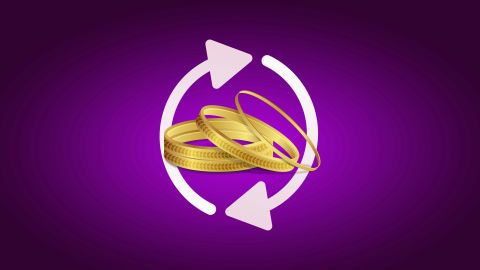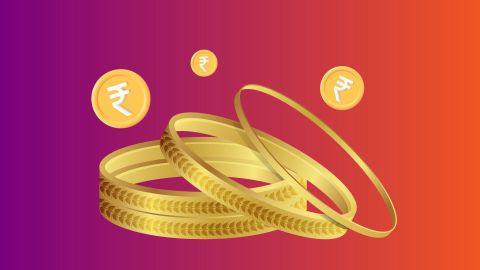2 mins
14 November 2024
Gold mining is the process of extracting gold from the earth, involving various techniques to retrieve this valuable metal from natural deposits. For centuries, gold mining has been essential to economies and continues to be in demand globally. With modern advancements, different mining methods are utilised to reach gold deposits deep within the earth. These methods ensure efficient extraction while minimising environmental impact. India, with its long history of gold mining, contributes significantly to the global gold supply.
Where is gold found in India?
India is home to several gold deposits, primarily located in Karnataka, Andhra Pradesh, Jharkhand, and Rajasthan. The Kolar Gold Fields in Karnataka, though largely inactive, were once among the world’s deepest and richest gold mines. Other significant deposits are found in Hutti and Raichur in Karnataka, while Jharkhand has the Sonbhadra region. Rajasthan’s Bhukia also holds promising gold reserves. These regions highlight India’s gold mining potential and contribute to the country’s demand for gold in the jewellery and investment sectors.
Major types of gold mining processes
Before understanding each process, it’s essential to know that mining methods vary based on geological conditions, deposit type, and environmental concerns.
Each gold mining method has unique benefits and drawbacks that impact cost, efficiency, and environmental impact.
Understanding gold mining processes is essential for both economic and environmental reasons. Knowledge of mining methods helps ensure sustainable practices that minimise ecological harm and preserve resources. For investors, miners, and policymakers, it’s crucial to know how mining impacts the gold market and production costs. In India, where gold is both a cultural symbol and an investment, mining practices influence the market's gold quality and availability.
How does gold quality from mining influence loan eligibility?
The quality of gold obtained through mining can play a crucial role in determining loan eligibility, particularly when it comes to gold loans. Lenders place high importance on the purity and valuation of gold, as it directly influences the loan amount and terms that a borrower can secure. High-purity gold sourced from trustworthy and refined mining processes generally yields better loan terms, often resulting in higher valuations and attractive interest rates. This is especially beneficial for individuals seeking quick loans as they can leverage their gold jewellery to avail funds when they need them.
With Bajaj Finserv Gold Loan, you can avail customised loan options based on the value and purity of your gold. As per the guidelines set by the Reserve Bank of India, you can get up to 75% of your gold’s value as loan. The loan appraisal process is designed to recognise the premium valuation that high-quality gold commands, thus allowing borrowers to maximise their borrowing potential. With this, you can also take advantage of loans starting from Rs. 5,000 to Rs. 2 crore, multiple repayment options, competitive rates, no prepayment charges and more, making it an optimal choice for those looking to unlock the value of their gold jewellery.
Major types of gold mining processes
Before understanding each process, it’s essential to know that mining methods vary based on geological conditions, deposit type, and environmental concerns.
- Placer mining: Extracting gold from riverbeds and alluvial deposits using water and gravity separation.
- Hard rock mining: Digging tunnels or shafts into the earth to reach gold deposits embedded in rocks.
- By-product mining: Extracting gold as a secondary product in mines primarily designed for other minerals.
- Open-pit mining: Large-scale excavation of surface areas to access gold ores.
- Heap leaching: Using chemical solutions to dissolve gold from low-grade ores on a heap leach pad.
Each gold mining method has unique benefits and drawbacks that impact cost, efficiency, and environmental impact.
- Placer mining: Advantages include low equipment costs and minimal environmental impact; disadvantages are limited gold availability.
- Hard rock mining: Yields high-quality gold; however, it requires significant investment and causes environmental disruption.
- By-product mining: Cost-effective but produces low quantities of gold.
- Open-pit mining: Offers easy access to large deposits, yet is environmentally invasive.
- Heap leaching: Economical for low-grade ores, but involves chemical usage, posing ecological risks.
Understanding gold mining processes is essential for both economic and environmental reasons. Knowledge of mining methods helps ensure sustainable practices that minimise ecological harm and preserve resources. For investors, miners, and policymakers, it’s crucial to know how mining impacts the gold market and production costs. In India, where gold is both a cultural symbol and an investment, mining practices influence the market's gold quality and availability.
How does gold quality from mining influence loan eligibility?
The quality of gold obtained through mining can play a crucial role in determining loan eligibility, particularly when it comes to gold loans. Lenders place high importance on the purity and valuation of gold, as it directly influences the loan amount and terms that a borrower can secure. High-purity gold sourced from trustworthy and refined mining processes generally yields better loan terms, often resulting in higher valuations and attractive interest rates. This is especially beneficial for individuals seeking quick loans as they can leverage their gold jewellery to avail funds when they need them.
With Bajaj Finserv Gold Loan, you can avail customised loan options based on the value and purity of your gold. As per the guidelines set by the Reserve Bank of India, you can get up to 75% of your gold’s value as loan. The loan appraisal process is designed to recognise the premium valuation that high-quality gold commands, thus allowing borrowers to maximise their borrowing potential. With this, you can also take advantage of loans starting from Rs. 5,000 to Rs. 2 crore, multiple repayment options, competitive rates, no prepayment charges and more, making it an optimal choice for those looking to unlock the value of their gold jewellery.
Frequently asked questions
What are the most common gold mining processes used in India?
In India, the most common gold mining processes include placer mining, hard rock mining, and by-product mining. Placer mining involves extracting gold from riverbed deposits, often using water separation techniques. Hard rock mining, more labour-intensive, requires excavating tunnels to access gold embedded within rock formations. By-product mining, which produces gold as a secondary output, is also common where other minerals are mined. These processes are selected based on regional geology and resource availability.
What factors in gold mining affect gold loan values?
Several factors in gold mining impact the valuation for gold loans. The gold's purity, determined by the mining and refining process, significantly influences loan eligibility and terms. Other factors include gold’s market price, mining location, and demand-supply dynamics. Gold sourced from reputable mining regions or companies generally has higher value, affecting loan amounts positively. Bajaj Finance and similar institutions consider these factors when assessing gold quality for loan applications in India.
What are the 5 cycles of mining?
The five cycles of mining include exploration, development, extraction, processing, and closure. Exploration identifies potential mining sites, followed by development, which establishes infrastructure for mining operations. Extraction involves the actual removal of gold ore from the earth, while processing refines and separates gold for commercial use. The final closure phase includes site rehabilitation, ensuring environmental restoration and safety measures are in place, making mining operations sustainable for the community and ecosystem.
Is gold mined in India eligible for a gold loan?
Yes, gold mined in India is eligible for gold loans. Bajaj Finance accepts gold jewellery, 18-22 karat, as collateral for loans. However, the purity of the gold, often determined through assays, directly impacts loan eligibility and terms. Indian gold, mined from regions like Karnataka or Jharkhand, is widely accepted, and its authenticity and purity ensure borrowers can access substantial loan amounts, making it a valuable asset for financing.
Show More
Show Less
Bajaj Finserv App for All Your Financial Needs and Goals
Trusted by 50 million+ customers in India, Bajaj Finserv App is a one-stop solution for all your financial needs and goals.
You can use the Bajaj Finserv App to:
Apply for loans online, such as Instant Personal Loan, Home Loan, Business Loan, Gold Loan, and more.
You can use the Bajaj Finserv App to:
Apply for loans online, such as Instant Personal Loan, Home Loan, Business Loan, Gold Loan, and more.
- Explore and apply for co-branded credit cards online.
- Invest in fixed deposits and mutual funds on the app.
- Choose from multiple insurance for your health, motor and even pocket insurance, from various insurance providers.
- Pay and manage your bills and recharges using the BBPS platform. Use Bajaj Pay and Bajaj Wallet for quick and simple money transfers and transactions.
- Apply for Insta EMI Card and get a pre-approved limit on the app. Explore over 1 million products on the app that can be purchased from a partner store on Easy EMIs.
- Shop from over 100+ brand partners that offer a diverse range of products and services.
- Use specialised tools like EMI calculators, SIP Calculators
- Check your credit score, download loan statements, and even get quick customer support—all on the app.






